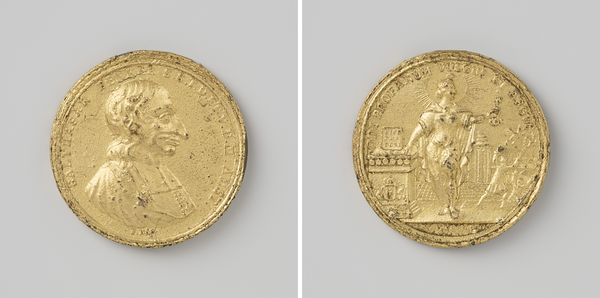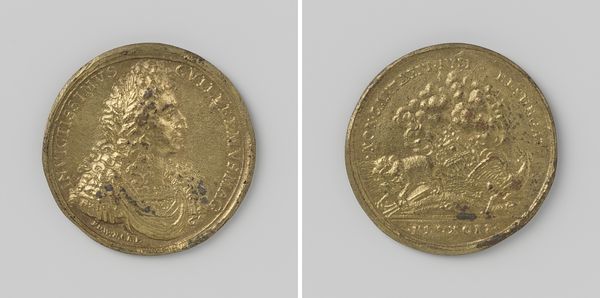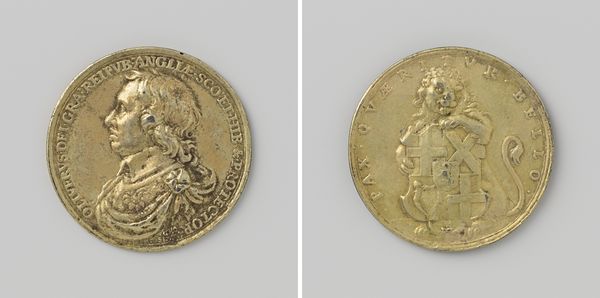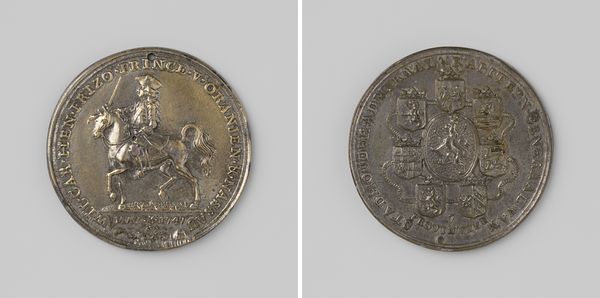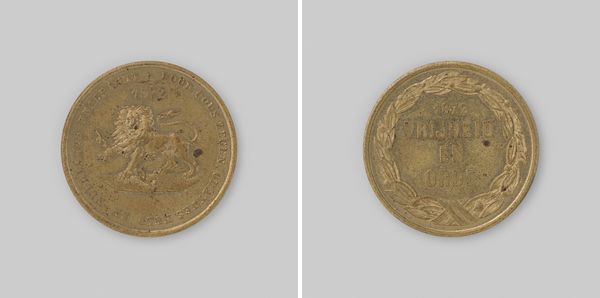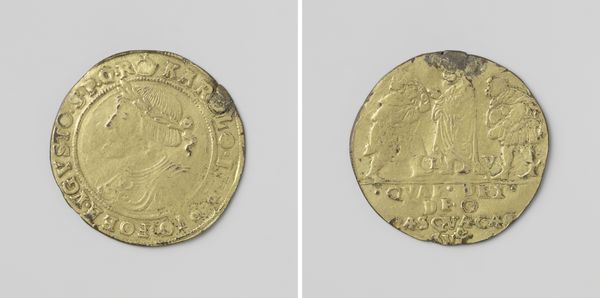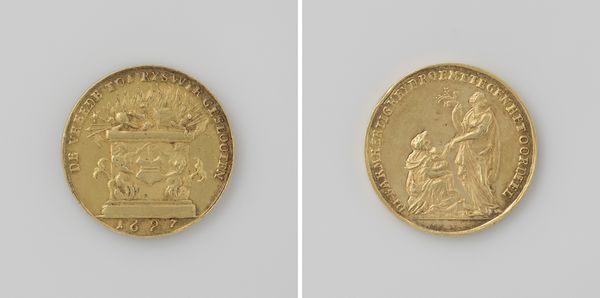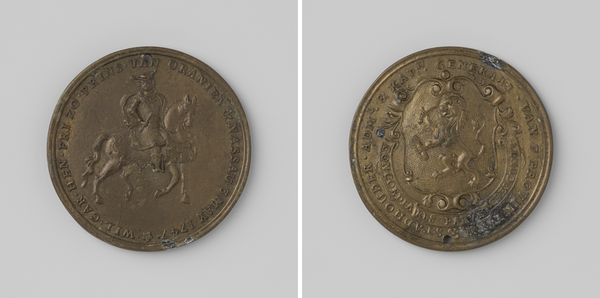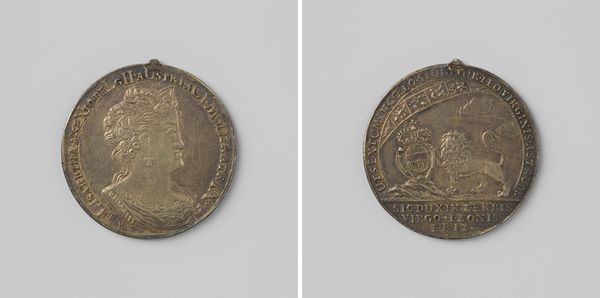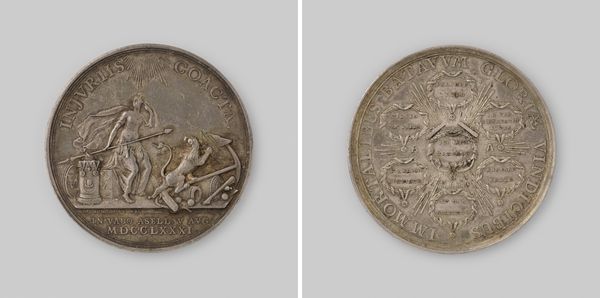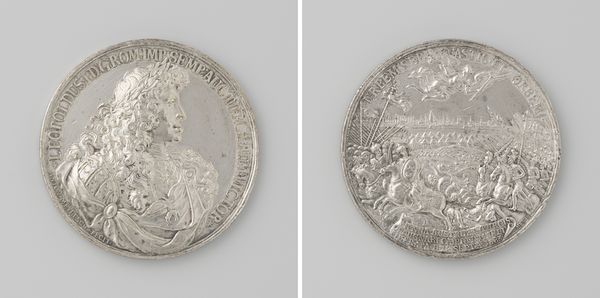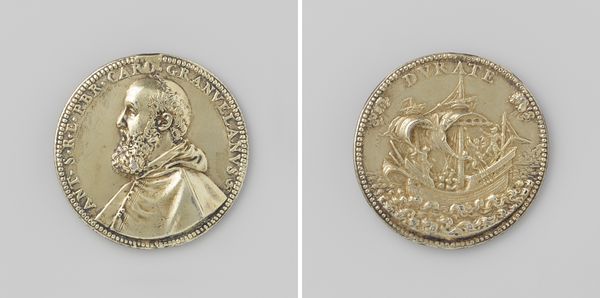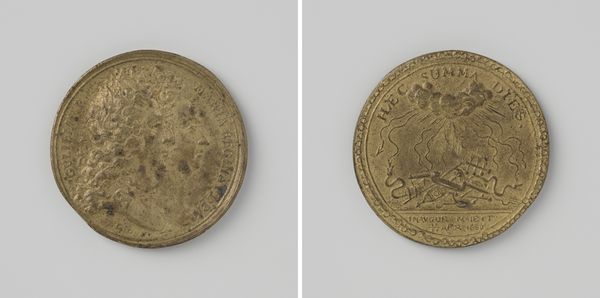
Dimensions: diameter 4.4 cm, weight 22.17 gr
Copyright: Rijks Museum: Open Domain
Curator: Here we have a gilded silver medal created by Johan George Holtzhey, around 1766. It's held at the Rijksmuseum, and commemorates the inauguration of Stadholder Willem V in 1747. Editor: My first impression is its striking physicality. The metallic gleam draws you in, and I'm immediately struck by the delicate relief work – especially given its scale. It almost feels intimate, like a personal token of loyalty. Curator: Exactly! Medals like this were often commissioned to mark significant political or personal events. Looking at the piece through a materialist lens, the choice of silver, then gilding, elevates it beyond mere currency, investing the object with prestige and implied value through skilled labour. The circular shape suggests continuity, perhaps the cyclical nature of power. Editor: That’s a fantastic point. The very act of producing and distributing these medals served a propagandistic function. Think of it as an early form of mass media. Distributing these tokens solidified Willem V's image in the public consciousness. The use of visual symbolism in medals directly connects to how power and loyalty were negotiated through art. Curator: Precisely. Considering Holtzhey’s skill, it shows a high level of craft – each strike of the metal and subsequent embellishment a labor investment intended to convey legitimacy. What do you make of the imagery? Editor: The two cherubic figures holding what seems like a decorated crest—and is that divine light radiating from above? Clearly an appeal to heavenly endorsement, to cement Willem's divine right. The choice to depict him with almost godlike support further cements this ideal of governance, connecting imagery directly to politics. Curator: The cherubs are classical, certainly. They were a symbolic trope widely used to evoke sentiments. It almost feels as though they add a sort of manufactured innocence to the medal’s meaning. Editor: The medals themselves—their circulation, where they were sold and how—would give a material insight into the public’s perceived notions about rulers at that point in time. We see similar works functioning as direct visual political propaganda in different societies around the world. Curator: Examining such an object, through the act of making and its historical purpose, provides insight on labour and social position in art. Thank you for unpacking the visual culture around political representation with me! Editor: A fascinating exploration into image politics and its societal roots! Thanks.
Comments
No comments
Be the first to comment and join the conversation on the ultimate creative platform.
